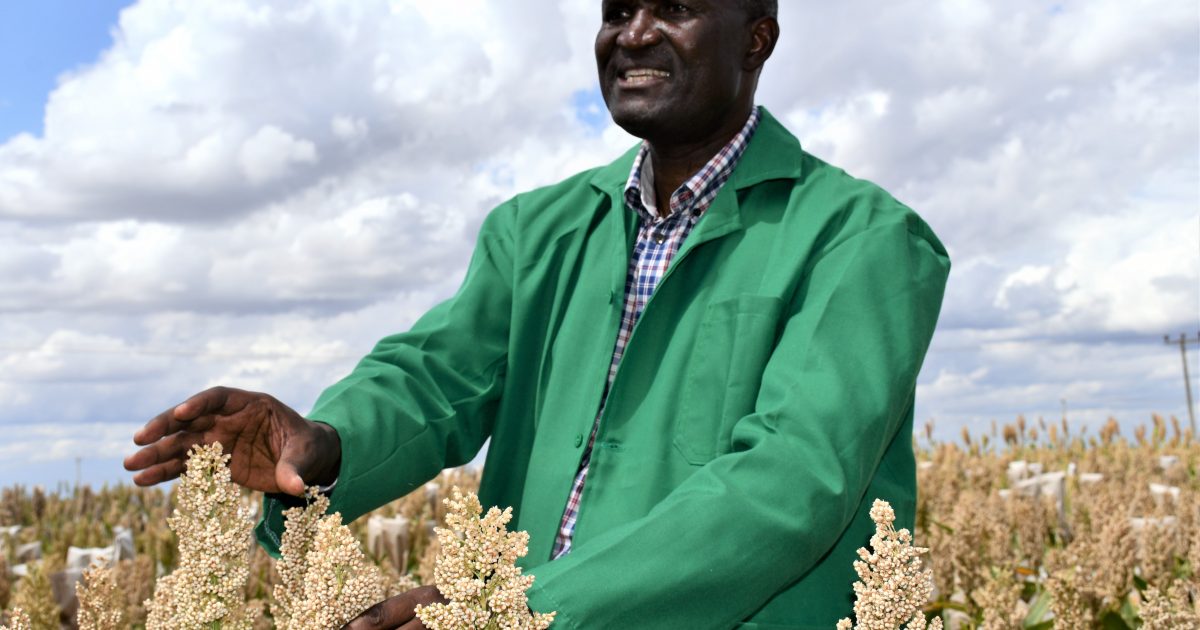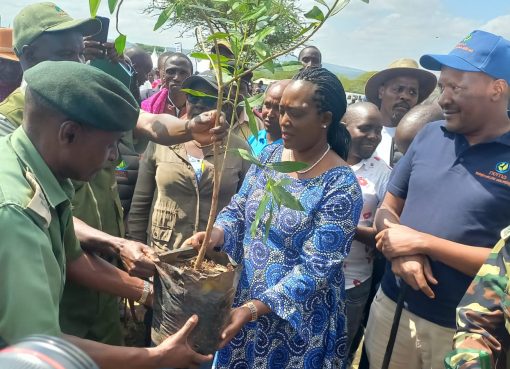The Government has through the Ministry of Agriculture, been pushing millers to blend flour with nutritious grains such as sorghum, millet and cassava, to ensure sufficient production of food.
This will also ensure promotion of production and commercialization of the local grains to improve farmer’s earnings.
The last few years has witnessed growing interest in sorghum, millet and other small grains from both the public and private players and the demand is expected to rise even more once the Flour Blending Policy is actualized.
Once the blending policy comes through, it will be part of President Uhuru’s ‘Big 4’ Agenda, which will contribute towards food security and also improve nutrition
But even as the country awaits for the Policy to be realized, private sector players have joined the government in developing hybrids, to respond to the high grain demand, especially for the brewing and animal feed value chains.
Speaking during a field day that brought a consortium of small grains seed industry members from East and Southern Africa (ESA), to evaluate and select sorghum and pearl millet hybrid parents being grown at KALRO – Kiboko field, Makueni, to use in their development programmes, Dr. Eric Manyasa, a crop breeder from the International Crops Research Institute for the Semi-Arid Tropics (ICRISAT), said that climate change and food and nutrition security are a reality and thus the importance of embracing such grains.
He noted that the government’s efforts to develop a Flour Blending Policy will come in with a need to have big volumes of the small grains of sorghum and millet and therefore players should be ready for that.
“We need as stakeholders and scientists to move with speed to produce the right materials, the right varieties adapted to the right agro-ecological areas, so that when the Policy is rolled out we shall be able to produce the right required volumes of the grains, to be able to run the blending system,” Manyasa said.
Sorghum, which has been one of the underutilized crops in the country, is one of the most important cereal crops in semi-arid tropics, and is well adapted to drought and diverse weather conditions.
Manyasa said that the increased use of sorghum by industrial processors, has led to high demand for sorghum grain, for instance in the brewing industry, saying today’s average national yield is about 0.7 tonnes per hectare, but with the potential of four (4) to five (5) tonnes.
He, however, noted the need to sustain the value chain that is profitable to all actors, specifically farmers, whom he said, need to make money out of these crops other than getting only food.
“How can we join the dots and break the myth that farmers cannot adopt new sorghum varieties. Farmers will invest where there is return to investment and therefore the various actors should create opportunities along the value chain, to be able to make the farmer sustain the production which is key,” he said.
Working on the demand side, Manyasa said, is the way to go and that is why opportunities such as blending that the government of Kenya is working on, will pull up demand for the grain.
He confirmed that recently, together with Egerton University, they have released a high breed sorghum that Kenya Breweries has embraced because of its best malting qualities, but the biggest challenge it has had is the delay in roll out of the seed system.
Currently, he said that Breweries at this time is probably doing between 40,000 to 50,000 tons of sorghum grain a year and with the current 250,000 tons going to 300,000 tonnes that is produced in the country, it is still not enough as the country still imports the grains though informally.
“In the region, we are also a paltry small producer of sorghum if we compare with Sudan which does 6 million hectares, Ethiopia has about 2 million hectares of sorghum, Tanzania 750,000 and this are large players whose much of the sorghum is not for industry, but for main food,” he said
Manyasa said the field day was to showcase to the partners who came from Zimbabwe, Sudan, Ethiopia, Tanzania, Uganda and also India, the new parents that have been developed by KALRO and ICRISAT, so that they can observe and select what will fit in their programmes, so that later they can be provided with the Seeds.
He reiterated on the need to direct efforts in terms of building value chains by creating demands for the climate smart crops and reduce dependence on imports and thus save the government the foreign exchange and make sure people are not just fed, but fed nutritionally, since one cannot compare the nutrition from these crops to the conventional or the standard cereals that are normally consumed every day.
“My clarion call is that, all of us need to work right from the scientists, the policy makers and deliberate policy efforts, that will drive the use of these crops put in place, so that we are able to build our own food systems, that are resilient whether in war or climate change,” Manyasa said .
Zubeir Ibrahim Mohamed, from Sudan’s NileSun Company that produces seeds for sorghum, said that although they grow a lot of sorghum in his country, he was looking for the improved hybrid developed in Kenya with very good parental lines, in order to adopt and get the best high yielding seeds for planting.
He explained that sorghum in Sudan is mainly used for feed and food but also for blending, where they use the white grain sorghum and wheat for bread making.
Zubeir noted that although they produce sorghum in over 6 million acres, the national average is low at about 0.2- 2.3 tonnes per acre but the improved breed they currently produce, and got the variety from Kenya last year, are producing 1.5 tonnes per acre.
“For the improved varieties it can go up to 1.5 ton that’s the potential and the hybrid has more potential but if we increase the area and improve varieties, this 0.2 ton can go up to 0.7 and it is a huge increase,” Ibrahim said
According to the seed consortium members, there is a lot of interest that has been developed in the last five years by the private sector, not only in Kenya but across East and Southern Africa with companies wanting to exploit the opportunity of the growing demand of the sorghum and millet grains, in order to build a market.
Sorghum, pearl and finger millet, pigeon pea, ground nut and chick pea are climate smart crops grown in Kenya and grown in marginal and semi-arid areas normally characterized by low and erratic rains and harsh temperatures.
They are, however, resilient, resist many traces, including drought and are also crops that are good for nutrition and health.
By Wangari Ndirangu





